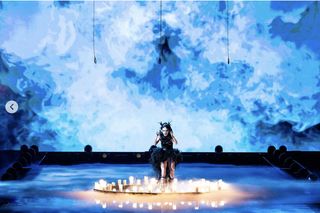Speeding trucks pose major safety risk on death bridge
SPEEDING trucks pose serious accident risks at notorious Slane Bridge, a damning official report reveals.
It highlights excessive speed of heavy commercial vehicles southbound on the N2 through Slane and on the steep approach from the Dublin side to the accident blackspot where 11 people have been killed in as many years.
It also found that trucks were unable to stop at the traffic lights because of a combination of factors including the steep gradient, mechanical failure, skidding and failure to see a red light in time.
The safety audit found the absence of an escape route for vehicles which failed to stop, especially trucks, was putting other road users "at risk of being hit from behind".
A key recommendation in the report, carried out by consultants for the National Roads Authority (NRA), is separate lanes for heavy goods vehicles and cars so they cross the bridge at different times.
It is hoped this will prevent a repeat of the accident in February in which local toddler David Garvey was killed. He was a passenger in a car that was crushed when a lorry hit it from behind.
But it was claimed the creation of a separate lane for lorries would not stop the problem of runaway trucks ploughing into other heavy goods vehicles on the steep descent.
"Trucks that go adrift will slam into the back of other trucks and not cars," said one reliable source.
The report found that truck drivers were not recognising hazards in sufficient time and losing control at the sharp bend on to the bridge "resulting in collisions with the walls".
Locals are demanding a complete bypass of the village but this has been ruled out by the NRA.
Slane Bridge is currently the subject of a preservation order and the NRA said there was no proposal to change that.
The report, by Roughan & O'Donovan-Maunsell consultants, said there was a history of accidents associated with the approaches to the bridge.
Most of these involved heavy commercial vehicles that failed to stop at the lights or collided with the bridge walls on the sharp bends. Most accidents occured on the Dublin side, which has a long treacherous gradient.
The Slane Bridge Action Group welcomed the safety measures recommended in the report. But it is expected to maintain pressure for a complete bypass of the village which is on the main Dublin-Derry road.
"If a truck coming down the hill towards the bridge gets into difficulty, traffic lights will make no difference to the sharp bend at the end of the hill," said group spokesman Paul O'Brien.
"The NRA is hopeful a lot of traffic on the N2 will divert to the M1 via the new Boyne Bridge when the Drogheda bypass opens. I would not be as hopeful and still believe a bypass of Slane, where traffic would cross the river on a level, would be the long-term solution," he added.
The group hopes to meet tonight to discuss the report's 16 recommendations which include:
* Two new sets of traffic lights and an 'escape' lane for southbound trucks that cannot stop in time.
* Two lanes to be provided southbound towards the bridge and one northbound towards Slane. Separate signal controls so cars get away before trucks.
* Raised island to prevent uphill traffic attempting to overtake using the right-hand southbound lane.
* Speed cameras on both approaches to bridge.
* Traffic signals to be placed on overhead mountings.
* Anti-skid surfacing on the downhill approaches to all traffic signals.
* Better public lighting on the bridge and approaches.
* Bigger kerbs to reduce the width of the roads.
* A new traffic calming feature at the 30mph speed limit on the southern approach.
* New traffic lights in the middle of Slane.
Join the Irish Independent WhatsApp channel
Stay up to date with all the latest news














